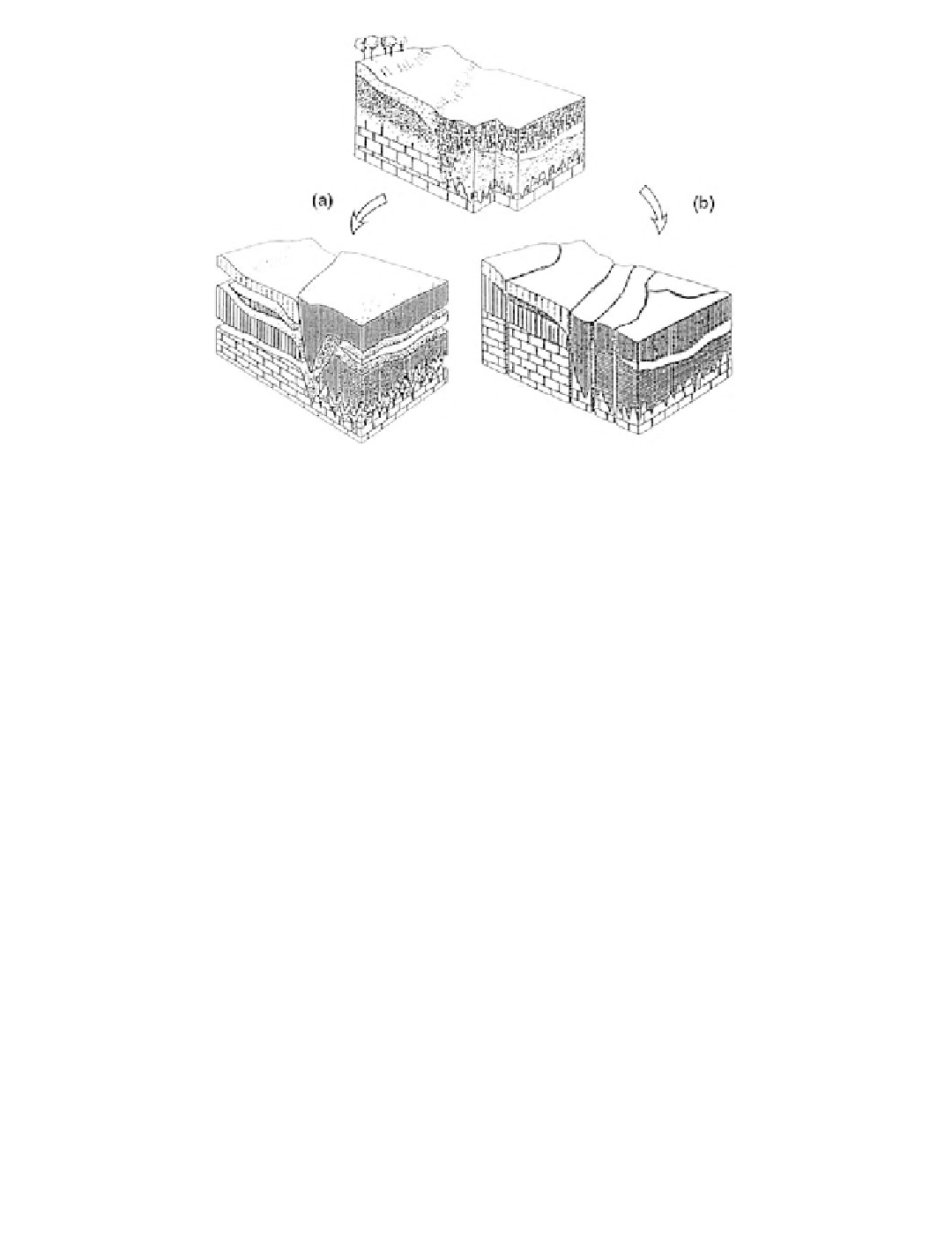Agriculture Reference
In-Depth Information
Figure 13.1
Compartments of the Pedological Cover (M.C. Girard, 1984). (a) - in homogeneous volumes, by
horizontal subdivision :
Horizons
.
(b) - in heterogeneous volumes, by vertical subdivision :
Solums
-
« Profiles »
-
« Pedons »
-
Typological
and
Mapping Units.
satisfactory legibility. This is the reason for the creation of the well-known Ñsoil associations.Ò
These SMUs thus clearly concern the numerous soil map legends elaborated over a long time. In
this case we have to try to describe the spatial arrangement of the STUs within the so-called
ÑcomplexÒ SMUs.
In this way, three main types of arrangement within these complex units are recognized
(Duchaufour, 1983):
¤
Soil sequence:
group of soils having a succession that is always in a given order; the reason for
this consistency is the dominating inÞuence, regularly repeated, of one of their pedogenetic factors
¤
Soil ÑchainÒ:
group of soils that are genetically linked, each one having received from the others,
or given to the others, certain of its constituents
¤
Soil juxtaposition:
group of soils whose coexistence within a map unit seems to be linked to no
evident rule of distribution
¤
Soil Functioning Units (SFU)
There is also a need for a method of subdivision that takes into account the functional relationships
between typological units, essentially by means of hydric Þows and transfer of constituents. Thus
the concept of SFUs came about: fragments of a landscape unit for which we know the arrangement,
and can therefore predict the functional dynamics. Thus all the STUs belonging to the same
catchment area may be perfectly well grouped into a single SFU, in order to describe an overall
functioning, for example, a generator of an erosive run-off or sub-soil transfers. (See Figures 13.2
to 13.4).
Therefore it is possible to propose a
(King et al., 1994a; King
et al., 1994b), which takes into account the nested combination of the structures previously
described: horizonsÏtypological unitsÏmapping unitsÏfunctioning units.
Finally, there is the concept of Soilscape
Spatial Organization Model of Soils
or Ñpedolandscape,Ò which is deÝned as the soil cover,
or part of cover, whose spatial arrangement results from the integration of a group of arranged
soil horizons and other landscape elements. This appears to be near the concept of the so-called
soil sequence, or catena (Milne, 1935; Fridland, 1976; Buol et al., 1997; Sommer and Schlichting,
1997).



















